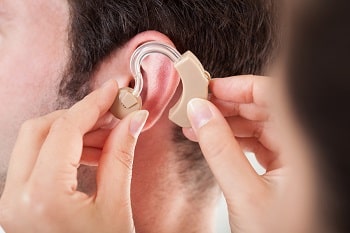Maybe you didn’t even notice it but other members of your family pointed out the fact that you need to blast the TV in order to hear it or that you have to asked people to repeat themselves quite often. If people often sound like they are mumbling or difficult to understand then you could be dealing with hearing loss. Approximately 48 million Americans deal with some degree of hearing loss. If you are part of this statistic then it’s important that you turn to an otolaryngologist you can trust.
While you may not realize it, an ENT doctor is exactly the specialist you want on your side to not only diagnose your hearing loss but also to provide the hearing aid you need to improve your hearing. While a hearing aid is not designed to restore hearing it can help amplify certain sounds to make hearing much easier.
There are a variety of different hearing aid options available to you, and the style you choice will really depend on your goals, lifestyle, degree of hearing loss, budget and any special features you are looking for. Common hearing aids styles include:
Invisible-in-the-Canal (IIC): Just as the name suggests, this style of hearing aid is placed deep within the ear canal so it’s completely invisible. It’s a great option for those with mild-to-moderate hearing loss.
Completely-in-Canal (CIC): Also good for mild-to-moderate hearing loss, this style will allow the hearing aid to be completely invisible within the ear canal. The only difference is that a clear tab on the hearing aid is used to place and remove it.
In-the-Canal (ITC): A small portion of this hearing aid is visible but it is flesh-colored so it won’t be obvious to those around you. It’s a great style for those dealing with mild to severe hearing loss.
In-the-Ear (ITE): This style is also capable of handling a wide variety of hearing loss, from mild to severe. This hearing aid is custom-made to fit the outer area of the ear rather than sitting within the ear canal.
Receiver-in-Canal (RIC): This allows the speaker to sit within the ear canal where it is out of sight; however, the speaker is connected to the amplifier (which sits behind the ear) by wires rather than tubing. It’s a discreet option for those with mild-to-severe hearing loss.
Behind-the-Ear (BTE): This type of hearing aid allows the speaker to lie hidden within the ear canal. The speaker is attached to a clear, thin tube that is connected to the amplifier, which sits behind the ear. This is a great option for those with moderate-to-severe hearing loss.
It’s important to find the right hearing aid to fit your unique needs, and an ENT doctor can provide you with the quality hearing aid you’re looking for so that you can be part of the conversation again.

